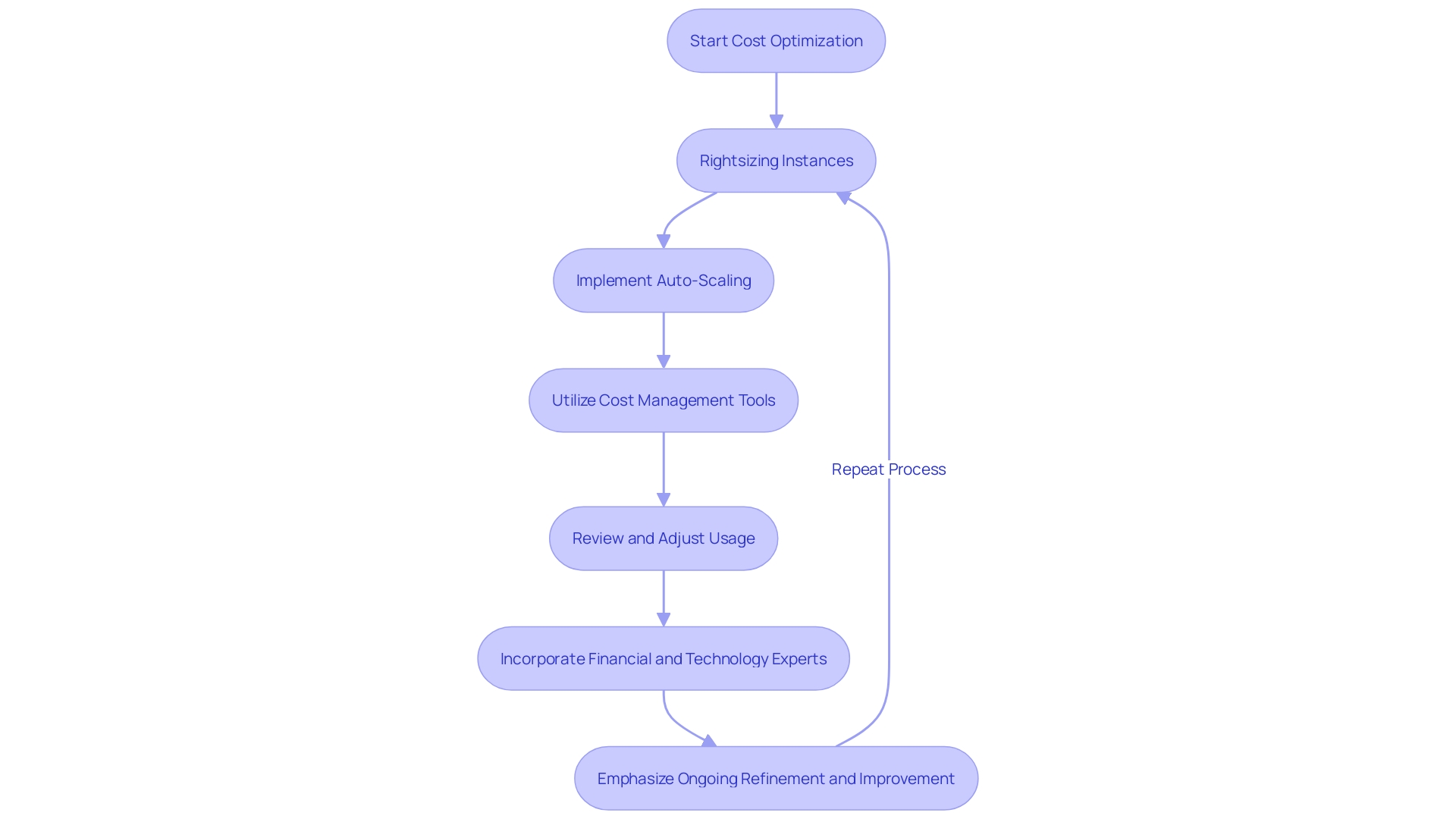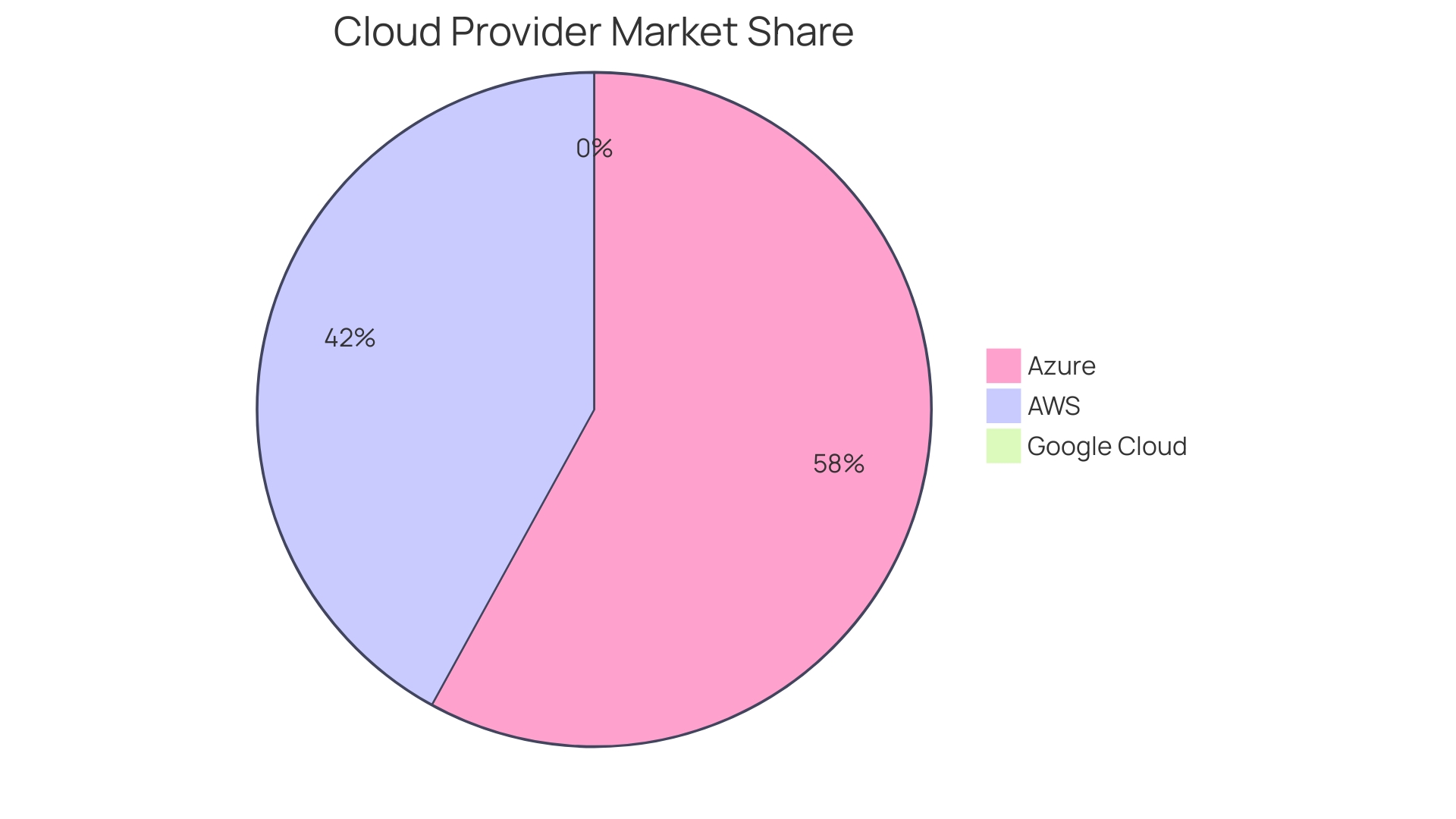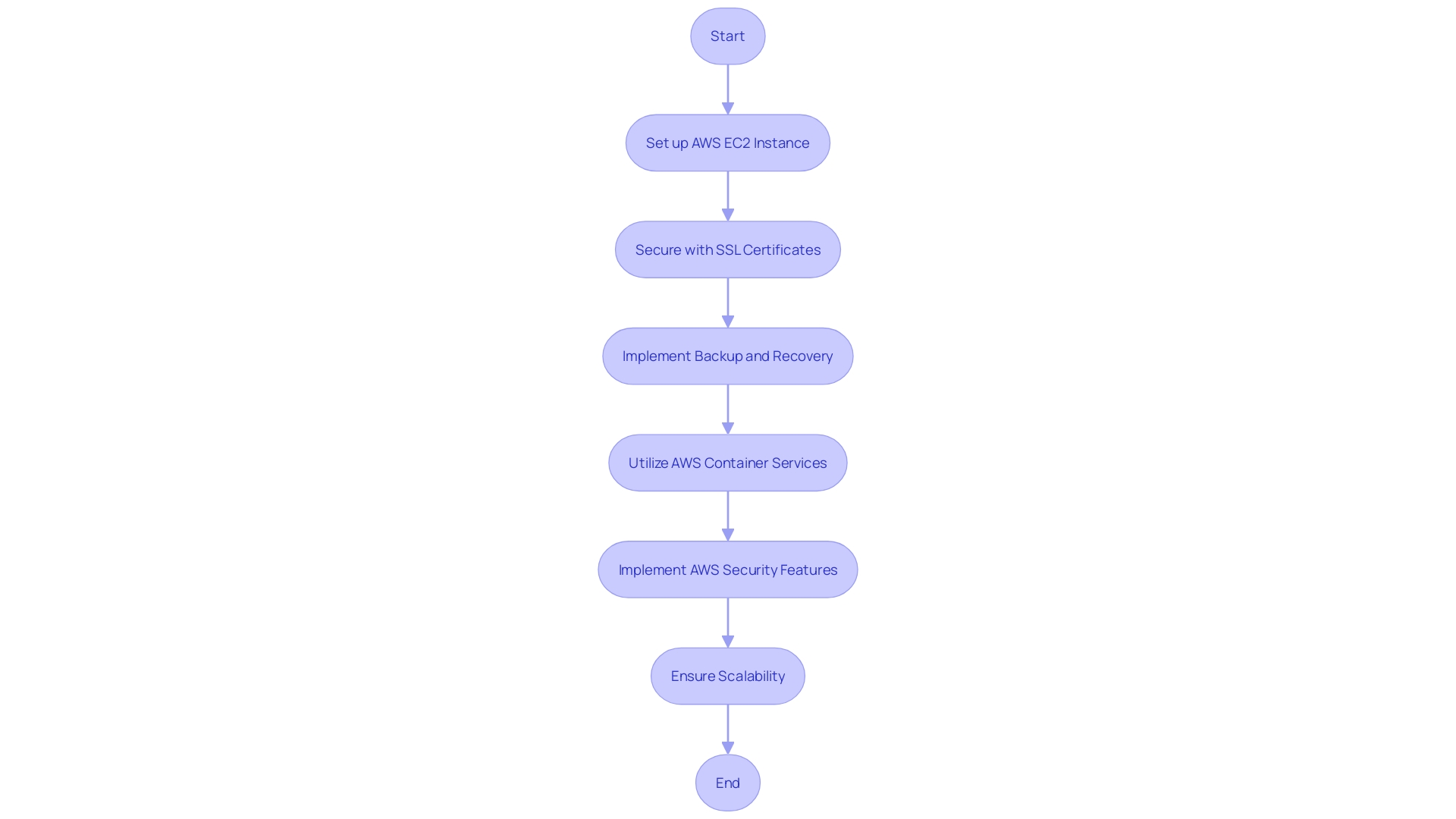Introduction
When it comes to AWS hosting solutions, understanding the different pricing models is key to a cost-effective strategy. AWS offers a range of options, including on-demand, reserved, and spot instances, each catering to different business needs. On-demand pricing provides flexibility for unpredictable workloads, while reserved instances offer substantial discounts for long-term commitments.
Spot instances allow bidding on unused capacity for lower costs. Organizations like Dunelm Group plc benefit from AWS's scalable architecture, especially when transitioning to distributed systems like microservices. With recent innovations like Amazon S3 Express One Zone and Graviton processors, AWS continues to provide top-notch hardware.
Choosing between building in-house solutions or buying services, such as SaaS applications or managed services, depends on expertise and practicality. Selecting the right AWS hosting option involves evaluating cost, resiliency, learning curve, and potential vendor lock-in. By treating pricing as a strategic element, companies can navigate changing markets and optimize technology investments.
AWS Pricing Models
When considering AWS hosting solutions for your business, understanding the various pricing models is crucial for a cost-effective strategy. AWS, known for its vast array of services and robust documentation, caters to diverse business needs with different pricing options such as on-demand, reserved, and spot instances.
On-demand pricing allows you to pay for the resources you use by the hour or second, with no long-term commitments, providing flexibility for unpredictable workloads. Reserved instances let you commit to AWS services over a 1 or 3-year period, offering a substantial discount on hourly charges in exchange for the commitment. For workloads with flexible start and end times, spot instances offer the opportunity to bid on unused AWS capacity at potentially lower costs.
Organizations like Dunelm Group plc, which relies heavily on their digital platform for revenue, can benefit greatly from the scalable architecture AWS provides, particularly when transitioning to distributed systems like microservices. This shift is essential for handling the over 400 million sessions their website experiences annually.
Moreover, AWS's recent innovations, such as Amazon S3 Express One Zone, which is up to 10x faster than existing S3 storage, can be a game-changer for businesses looking for high-speed data access. With advancements like the Graviton processors, AWS continues to provide state-of-the-art hardware that supports modern, scalable, and elastic workloads under a pay-as-you-go pricing model.
Deciding whether to build in-house solutions or to buy services is a common dilemma. For companies with the expertise, building might be viable, but for many, purchasing services like SaaS applications or managed services is more practical, as the cloud provider handles scale and maintenance, aligning with the organization's business goals.
In summary, selecting the right AWS hosting option involves evaluating cost, resiliency, learning curve, and potential vendor lock-in. As the market evolves, pricing and packaging strategies play a pivotal role in growth, exemplified by Atlassian's Starter licenses during the financial crisis of 2009. By treating pricing as a strategic element, companies can navigate rapidly changing markets and optimize their technology investments.
Key AWS Services and Their Costs
Amazon Web Services (AWS) provides a suite of hosting solutions that enable organizations to run their workloads efficiently and at scale. Key services that are often utilized for this purpose include Amazon EC2, Amazon RDS, and Amazon S3. Each service offers different capabilities, such as compute power, database storage, and object storage, respectively, and understanding their costs is vital for effective financial management and cost optimization.
AWS pricing is primarily consumption-based, meaning you pay for the resources you use. Several factors influence the cost, including the instance type, storage size, data transfer, and additional features. For instance, Amazon EC2 offers various instance types that cater to different workloads and compute requirements. By selecting an instance that matches your needs, you can optimize your expenditure. Similarly, with Amazon RDS, the database instance size, along with the storage and backup options, will affect the overall cost.
To aid in cost management, AWS provides tools like the AWS Pricing Calculator, which helps estimate costs based on your specific requirements. For a more refined approach, you can use third-party tools built by experts like Eric Wastl, which show the cheapest way to obtain the necessary compute resources with a given number of vCPUs and memory. It's important to note, however, that while these tools are helpful, they should be used with caution as prices and features change regularly.
Cost optimization is an ongoing process that requires collaboration between financial and technology teams within an organization. Financial leads must understand the cloud model, purchasing options, and monthly invoicing process, while technology leads must be cognizant of financial and business requirements. Companies like Dunelm Group plc have demonstrated the significance of adopting a cloud-first approach, especially as they scale and demand elasticity and high availability for their revenue-generating digital platforms.
In summary, by leveraging AWS services thoughtfully and employing sound financial management practices, organizations can minimize costs while maximizing their return on investment. It's essential to continuously refine and improve your AWS usage to align with business outcomes, making use of the available tools and expertise to drive cost-aware operations.
Cost Optimization Best Practices
Achieving cost optimization with Amazon Web Services (AWS) hosting is a dynamic process that involves several strategic practices. To effectively manage expenses while maintaining performance and security, consider rightsizing your instances to match the workload demands. This practice ensures that you're not overpaying for underutilized resources. Additionally, implement auto-scaling to adjust your resource capacity in real-time, aligning closely with current needs and avoiding unnecessary costs.
AWS provides a suite of cost management tools designed to offer insights and control over your AWS spending. It's imperative to regularly review and adjust your usage based on these analytical tools to avoid cost overruns. As Renato, a principal cloud architect and AWS Data Hero, suggests, 'The practices can help you build and operate cost-aware workloads that achieve business outcomes while minimizing costs.'
GoDaddy, a global web hosting provider with over 20 million customers, demonstrates the importance of a data-driven approach to cost management. By applying a structured method known as the 'seven layers of improvement opportunities,' GoDaddy optimized its batch processing jobs, showcasing a commitment to efficiency and customer satisfaction.
Incorporating financial and technology experts into your cost management strategy is also crucial. Financial leads such as CFOs and financial planners must grasp the cloud consumption model, while technology leads should be cognizant of budget constraints and service level agreements. This collaboration is essential for creating an IT value story that resonates with business outcomes. As highlighted in the Well-Architected Framework's Cost Optimization pillar, cost optimization is a continuous endeavor that spans the life cycle of a workload, emphasizing the need for ongoing refinement and improvement.

Managing and Tracking AWS Costs
Effective management of AWS costs is essential for optimizing your technology budget and ensuring the financial health of your organization. Leveraging tools such as AWS Cost Explorer and AWS Budgets, you can gain insights into your cloud spend and implement measures to control costs. AWS Cost Explorer enables you to visualize and understand your AWS spending patterns over time, while AWS Budgets allows you to set custom budget thresholds and receive alerts when your costs or usage exceed predefined amounts.
Incorporating the Cost Optimization pillar of the Well-Architected Framework, you can refine and enhance your approach to cloud financial management throughout the lifecycle of your workloads. This framework suggests a focus on key areas such as financial management, resource provisioning, data management, and cost monitoring. By following these guidelines, you can develop IDP workloads that not only meet your business objectives but also minimize costs.
To foster a culture of cost-awareness, it's vital to establish a collaboration between finance and technology teams. Financial leads need to grasp the cloud consumption model and purchasing options, while technology leads should align their efforts with financial and service level requirements. By integrating domain expertise from both financial and technological perspectives, your organization can more effectively manage cloud costs.
Moreover, tracking metrics such as cost per customer can reveal usage patterns and signal the need for product optimization or pricing adjustments. As companies progress in their cloud journey, staying vigilant about AWS spending becomes increasingly important. The right cloud cost management tools can provide the visibility and control needed to manage costs effectively, especially as technologies like microservices and Kubernetes complicate the tracking of resource usage.
By employing these strategies and tools, you can maintain a balanced approach to cloud spending, ensuring that your organization leverages AWS services efficiently while staying within budgetary constraints.
Common Cost Surprises and How to Avoid Them
Navigating the complexities of AWS hosting costs requires a strategic approach to avoid unwelcome surprises. To achieve this, comprehending the Cost Optimization pillar of the AWS Well-Architected Framework is crucial. This framework emphasizes a continuous refinement process throughout a workload's lifecycle, ensuring that business outcomes are met with minimal expenditure. Drawing on the IDP case study, one learns the importance of integrating financial and technology stakeholders in cost management, including CFOs and technology leads who must understand the cloud model and its implications on the budget and business requirements.
Companies like GoDaddy have demonstrated the efficacy of a structured optimization approach, termed 'seven layers of improvement opportunities,' to enhance efficiency in batch processing jobs. Similarly, AWS users must stay vigilant about 'junk fees'—unanticipated charges that can inflate a cloud bill. By adopting a proactive stance, akin to GoDaddy's methodology, one can identify and eliminate these costs.
Moreover, it's not just the visible costs that matter. Data egress charges, often overlooked, can significantly impact the bill. They pertain to data transferred out of the AWS network, charged based on the volume—measured in gigabytes or terabytes. Understanding and managing data lifecycle can help in relocating data to more economical storage options or even purging redundant data, thus controlling egress expenses.
To further empower users in this cost-conscious journey, AWS provides an array of tools for monitoring and optimizing spending. A pay-as-you-go pricing model offers flexibility but demands diligent management to prevent budget overruns. Charges for compute resources, such as EC2 instances, and storage costs involving services like S3, are based on actual usage, reinforcing the need for careful planning and monitoring.
Ultimately, AWS hosting costs can be optimized by aligning financial management with technological insight, continuously refining data management practices, and leveraging AWS's cost monitoring tools. As noted by industry experts, the journey to cost optimization is not a one-time event but an ongoing venture that can yield substantial savings and a maximized return on investment.

Using the AWS Pricing Calculator
Understanding the cost implications of AWS hosting services is crucial for efficient budgeting and financial planning, particularly when considering the popular AWS Simple Storage Service (S3). Although storage costs per unit tend to decrease over time, the volume of data stored often grows at an even faster rate, potentially leading to unexpectedly high bills. The AWS Pricing Calculator serves as an essential tool for preemptively managing these costs by allowing users to input their anticipated usage details and select the appropriate services to generate accurate cost estimates.
To begin, users should familiarize themselves with the AWS free tier, which offers a range of services without cost for a limited time, usually one year from the sign-up date. This is an excellent opportunity to understand the cost-benefit of various AWS products. Next, it's important to have a conceptual diagram of the system architecture, breaking down different components and their respective usage and cost profiles. This helps in identifying the services most relevant to the business needs.
When using the AWS Pricing Calculator, it is advisable to start with a significant slice of your architecture and include assumptions about the technologies you intend to use, such as AWS Kinesis Streams for streaming technologies. Each AWS service has its own pricing model, which means accurately estimating the cost requires a detailed understanding of each service's financial implications. For instance, the S3 Pricing page details how charges are applied for storage and requests, guiding users on optimizing their S3 storage costs.
Moreover, a data-driven approach to IT challenges, including cost management, is vital. Transformation processes should be designed to align with business needs rather than merely accessing raw data, as this can impact costs related to storage, requests, and data processing.
Finally, while third-party tools like the one built by Eric Wastl can offer insights into the cheapest compute resources based on vCPUs and memory, it's essential to note that such tools are not affiliated with any service provider and may contain inaccuracies. They should be used cautiously and as a supplementary resource to AWS's official pricing tools.
Secure WordPress Hosting on AWS
Securing a WordPress site on AWS requires a robust approach, particularly in light of the significant cybersecurity threats that modern websites face. One notable example is the Ford Foundation, which encountered limitations with its previous CMS and needed a solution that could keep pace with its growing content output. Amazon Web Services (AWS) addresses such challenges by providing a comprehensive suite of services that ensure scalability, security, and reliability for WordPress hosting.
When setting up a WordPress site on AWS, starting with an EC2 instance is like laying the foundation for a digital fortress. AWS EC2 offers the flexibility to configure your environment to meet specific needs, which is critical given the alarming cybersecurity statistics. For instance, Wordfence reported over 100 billion password spray attacks in 2023 alone. Moreover, small businesses, which constitute 43% of cyber attack targets, often lack the resources to fend off such threats. Therefore, establishing a secure EC2 instance is the first of several steps to protect your WordPress site.
The next step is to secure your site with SSL certificates, which not only encrypt data transmission but also boost your site's credibility. Implementing backup and recovery strategies is another pivotal measure, safeguarding your site against data loss and downtime. Amazon's robust documentation and resources aid in these processes, making it more accessible for WordPress site maintainers to manage their sites effectively.
Additionally, the scalability of AWS services is critical for growing sites. As a case in point, the recent release of WordPress 6.4, which saw contributions from over 600 individuals across 56 countries, highlights the platform's global reach and the need for a hosting solution that can scale accordingly. This is where AWS's container services and security features come into play, ensuring that as WordPress continues to evolve—as seen with the upcoming State of the Word event and the enhancements in Gutenberg 16.8—your hosting infrastructure can evolve with it.
In summary, hosting a WordPress site on AWS is not just about keeping up with the latest features or contributing to the community. It's about ensuring that your site stands on a secure, scalable, and reliable infrastructure, capable of adapting to the ever-changing digital landscape and the myriad of security threats it presents.

Conclusion
In conclusion, understanding AWS pricing models is crucial for a cost-effective hosting strategy. AWS offers on-demand, reserved, and spot instances to cater to diverse business needs. Effective cost optimization involves practices such as rightsizing instances, implementing auto-scaling, and utilizing AWS's cost management tools.
To manage AWS costs effectively, it is important to leverage tools like the AWS Pricing Calculator and understand the cost implications of key services such as Amazon EC2, Amazon RDS, and Amazon S3. By aligning financial management with technological insight and utilizing cost monitoring tools, organizations can optimize their AWS hosting costs.
Securing a WordPress site on AWS requires a comprehensive approach. Starting with an EC2 instance provides a solid foundation for security. Implementing SSL certificates, backup and recovery strategies, and leveraging AWS's documentation and resources further enhance site security.
In summary, by understanding AWS pricing models, effectively managing costs, and implementing robust security measures, organizations can optimize their technology investments and navigate the rapidly changing market.




